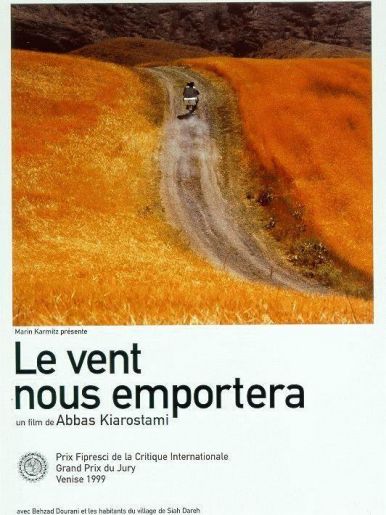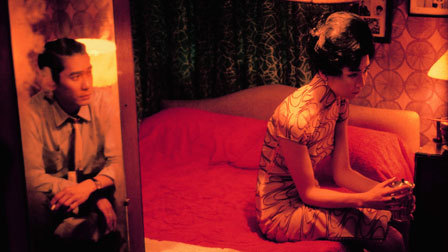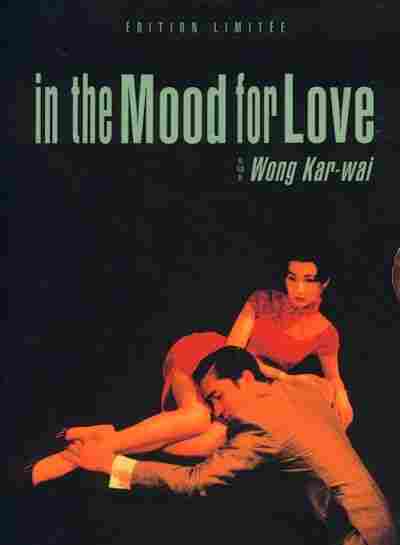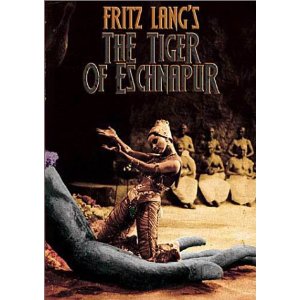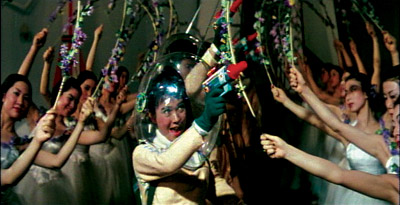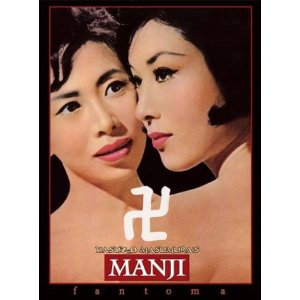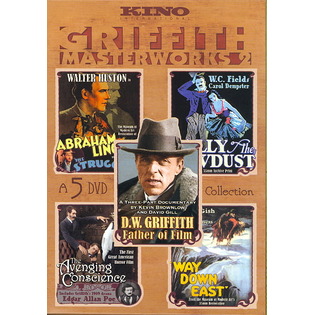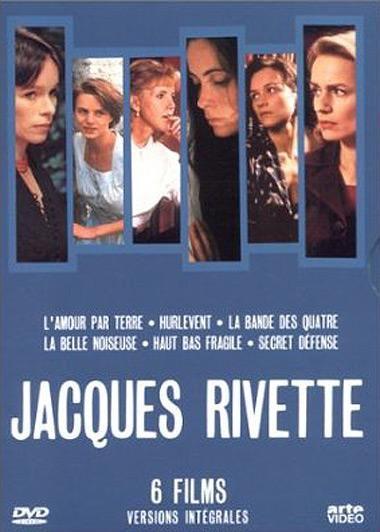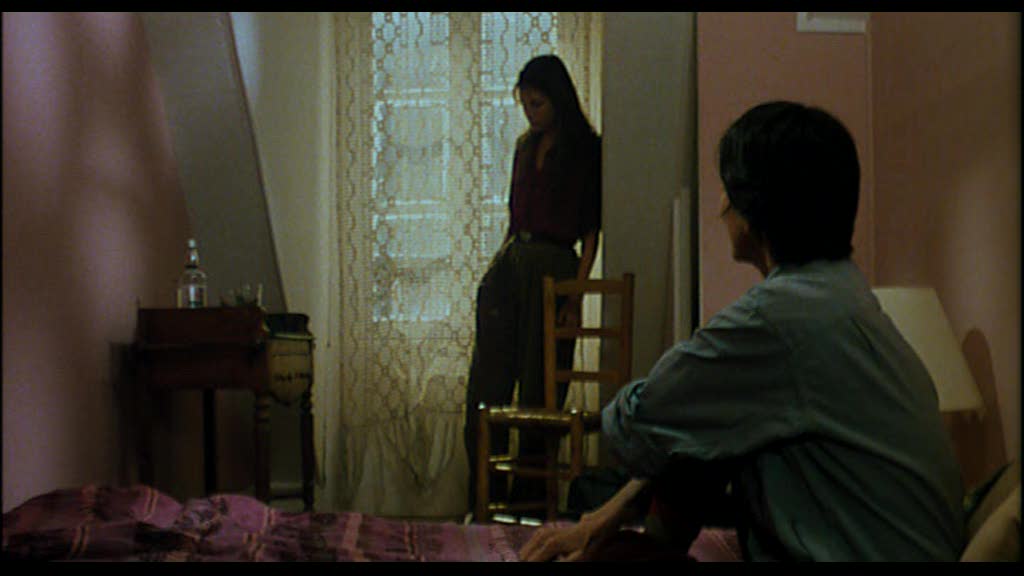From Cinema Scope #14 (Spring 2003). It’s interesting to note that many of the releases that I discuss here are still available, if not always readily available. All of my recent columns, by the way, starting with issue #40, can be found on Cinema Scope‘s web site. — J.R.
A FEW PRELIMINARIES. The word is still getting out about the riches that are currently available to cinéphiles owning DVD players that play discs from all the territories —- players that are by now readily available at affordable prices to anyone with enough initiative to go looking on the Internet. But it might be added that the number of previously scarce films that can now be purchased in North American Territory is already quite substantial.
Combine these two opportunities and you have the pretext for a new column, which will be devoted not to DVD players (that’s your problem) but to DVDs that are currently available. This will follow the capitalistically incorrect premise that once you move beyond your own designated territory, the world becomes your oyster and a different sort of place from the one that assumes that you’re necessarily trapped as a consumer by the choices offered within your own national borders.
Two cases in point: (1) Last fall, shortly after ordering a DVD of Kiarostami’s The Wind Will Carry Us from New Yorker Video, I came across the same film with English subtitles from MK2 Editions at a shop in Paris for roughly the same price —- with the significant difference that the MK2 DVD of Le vent nous emportera offers two discs, one containing two excellent feature-length documentaries about the making of the film, also playable with English subtitles. (2) Similarly, I would argue that the two-disc French edition of Wong Kar-wai’s In the Mood for Love from Ocean Films is superior in design to the two-disc U.S. edition from Criterion, even though Criterion’s transfer of the film is better and I have to confess my copy of the French edition has a few technical glitches, making it less user-friendly. What the Ocean version has going for it is a sleek kind of theme- park layout (complete with a 12-page illustrated “guidebook”) allowing you to get in a cab with the two leads and proceed to the “guest house,” “hotel,” “restaurant,” or various “local businesses,” each of which contains various supplements. I suppose the completist will want to have both sets. Both can be accessed with English subtitles and both have the same three extra scenes and alternate ending in Angkor Wat, much of which can be acccessed with or without Wong’s commentary. Ocean has a long interview with Wong in Cannes, Criterion a subsequent press conference in Toronto. The Yankee set has the benefit of an experimental short film by Wong entitled Hua Yang De Nian Hua.
To take a couple of reverse examples, demonstrating that France doesn’t always have the edge on North America: Fritz Lang’s glorious and magisterial The Tiger of Eschnapur and The Indian Tomb —- his two penultimate features, made in 1959 —- was celebrated in the pages of Cahiers du Cinéma but to this day has never received a proper North American launch. Similarly, the transgressive films of Yasuzo Masumura in the late 50s and 60s received a detailed dossier from the Cahiers in 1970, but no critical recognition in North America until quite recently. It would seem to follow from this that France is where one should go for DVDs of these films, but in fact they’re available only from Fantoma, an American company —- the two Langs on separate discs, and four Masumura features (the brilliant Giants and Toys and Manji, the less brilliant Afraid to Die and Blind Beast), with two more (the extraordinary Red Angel and the interesting Black Test Car) announced for early this year.
For North American viewers who haven’t yet gone to the trouble of ordering DVDs on the Internet from outside the U.S. and Canada, I should mention that a quick perusal of the sites available on Amazon.com and fnac.com —- the latter more useful if you can command a smattering of French — will get you started on the right path. A DVD ordered from France or England in this manner may reach you within a week’s time, and even with postage won’t cost an inordinate amount. (Bear in mind that you won’t have to worry about sales tax.) Once you start spreading your nets in this manner, the world outside your national borders may start looking closer and more accessible than you might have imagined —- although various anomalies of the postal system still apply. (Within my limited experience, mail from Toronto to Chicago often takes longer than mail from Hong Kong, and parcels sent airmail from London or Paris may take less time than airmail parcels from New York — or even some packages sent by surface mail within Chicago.) By the same token, ordering via the Internet within your own country is a fairly painless substitute for checking out local video outlets.
***
RECENT RELEASES. Two bountiful box sets that I received late last year are “Griffith Masterworks” from Kino on Video (seven DVDs, with over six hours of supplementary materials) and “Jacques Rivette” from Arte Video in France (eight DVDs, with over three hours of supplementary materials). I haven’t yet had time to check out either of these exhaustively, but a few particulars seem in order.
The five volumes of the Griffith set, not counting diverse extras, are (1) The Birth of a Nation + seven Civil War shorts by D.W. Griffith (on two discs), (2) Intolerance, (3) Broken Blossoms, (4) Orphans of the Storm, and (5) Biograph shorts (23 in all, on two discs). The quality of the prints and their presentation, including tinting and music, seems excellent, but I should add that it was the extras that prompted me to buy this set. Some of these are printed documents, articles, and photographs relating to the films and to Griffith. But the ones I’ve found especially interesting are filmed introductions to Intolerance and Orphans of the Storm by Orson Welles (both of which confront head-on rather than dance around the issue of Griffith’s outdatedness); a primitive 1908 film (Rescued from the Eagle’s Nest) featuring Griffith as lead actor; home-movie footage of Griffith’s funeral; two films about The Birth of a Nation (a 24-minute David Shepard documentary from 1992, a hilariously awkward six-minute sound prologue from 1930 featuring Griffith and Walter Huston); a filmed introduction by Lillian Gish to Broken Blossoms; clips from two 1914 Italian spectaculars that influenced Intolerance, Cabiria and The Last Days of Pompeii, and from Griffith’s The Fall of Babylon (offering an alternative “happy” ending to Intolerance’s Babylonian segment). Most touching of all is a highly personal 25-minute radio eulogy for Griffith delivered by Eric von Stroheim, which concludes with him bursting into tears.
Regarding the Rivette package, two caveats should be noted at the outset. There are no English subtitles at all, and the Rivette features included are all from his later and (I would say) inferior period: L’Amour par terre (1983), Hurlevent (1984), Les Bande des quatre (1988), La Belle Noiseuse (1990, on two discs), Haut Bas Fragile (1994), and Secret Défense (1997). I should further note that Les Bande des quatre, La Belle Noiseuse, and Secret Défense are already available on separate DVDs in the U.S. with English subtitles. (So, for that matter, is Rivette’s two-part, 1993 Jean la Pucelle.)
Why, then, draw attention to this French set? A couple of good reasons come to mind. The version of L’Amour par terre included is a “premiere” of the original 169-minute cut, which Rivette was contractually obliged to suppress in favor of the much inferior 128-minute cut released in 1983. Having seen the longer version several years ago at a Rivette retrospective held at the Rotterdam film festival —- the only previous airing of this feature that I’m aware of — I was amazed to discover how much more “commercial” (as well as more interesting) it was; if memory serves, the missing 41 minutes relates mainly to the sex lives of the two heroines, played by Jane Birkin and Geraldine Chaplin. The film is still a relatively minor Rivette effort, but, as is always the case when it comes to Rivette, the longer version is irrefutably better.
The last disc of the set, consisting exclusively of extras, includes a brand-new, hour- long interview with Rivette by the estimable Frédéric Bonnaud (film critic for Les Inrockuptibles, the excellent French weekly, and occasional contributor in English translation to Film Comment; a 20-minute Rivette interview by Michel Boujut from 1989; a two-hour, recently recorded series of interviews with a half a dozen of Rivette’s recent screenwriters; and the 52-second Rivette short, Une Aventure de Ninon, made in 1995 for the compilation feature Lumière & Co. Furthermore, now that Rivette is beginning to surface on French DVDs, one devoutly hopes that his greatest films —- Paris Belongs To Us, L’Amour fou, the separate 4-hour and 12-hour versions of Out 1, and Celine and Julie Go Boating —- are also in the works, as well as the endlessly fascinating Duelle, Noroît, and La Pont du Nord. And if the French DVD producers have any notion of how many English-speaking people write me regularly asking how they can possibly see most of these films, they’ll take the trouble to issue these with English subtitles.


